It seems to be a common assumption in today’s world that organic food is much more expensive than non-organic, conventional foods.
Defenders of organic foods will often cite the health benefits, less pesticide residues, environmental impacts, etc while the opponents will cite high pricing, how do we feed the world (a myth covered in part 3 of this series), and that there’s no difference between organic and conventional non-organic foods in nutritional quality, so why spend more? (also covered in part 3).
When examining the two arguments, “convenience” must also be factored in. So many people rely on fast food or “take-out” for nourishment on a daily basis, some because they believe it’s a quick hunger fix and others because they believe it’s the cheaper option for their food budget.
So in this blog, we’ll take those beliefs and examine some of the “organic is more expensive” misconceptions, as well as cover some of the tips I use for saving money on the healthier organic food options for our most optimal health, vitality and performance.
We’ll cover these sections below, each clickable to “jump” to that part of the post:
- Pricing misconceptions
- Tips (and tricks!) on labels
- Hidden costs
- Where to find organic foods
- 10 tips for saving money on organic food
Let’s get started…
MISCONCEPTIONS
Overall, the “organic is more expensive” myth is not as black and white as we think for multiple reasons. It is true that if we go to the store and buy pastured, organic chicken, it will be more expensive than its cheapest factory farmed conventional counterpart. A basket of organic strawberries at Whole Foods will be more expensive than a conventional variety at a major grocery store chain. And a shopping cart full of food from Whole Foods will most likely be more expensive than a shopping cart full from Walmart.
I get that.
But it’s also entirely possible to fill a shopping cart with non-organic conventional foods and pay more money than organic foods.
Organic foods aren’t cheaper than the cheapest conventional foods, but when you do a little diligence, you’ll find non-organic conventional foods at the same price or more expensive than organic in almost every area of the major commercial super markets.
Let’s first take a look at a few of the individual foods I found, including a few side by side picture comparisons:
PRICE PER OUNCE & POUND
As I did my research going through different stores to find pricing on foods, I noticed that there are many categories of organic food (beef, dairy, vegg, etc) that are the same price or LESS, than the non-organic counterparts. I also found organic just being slightly more than conventional when it came to price per ounce where some simple food prep principles can help make it a wash when paying slightly more (more on meal prep in tips section).
I went to many different locations when looking at prices: a major supermarket chain, Sprouts, Whole Foods, Trader Joe’s, my local co-op (sources local), and Costco.
Here’s just a few of the items that I found price per pound & ounce:
Ground Beef
Major supermarket: non-organic ground beef $5.99/lb. Oscar Meyer bologna for $5.99/lb. I wanted to mention this because I was a little shocked when I saw this.. bologna same price? really?
Sprouts: grass-fed organic beef $6.99/lb. Frequent sales for $4.99/lb.
Whole Foods: grass-fed $7.99/lb. I’ve found it on sale for $4.99/lb.
Trader Joes: grass-fed organic $6.99/lb.
Costco: organic ground beef for $4.49/lb. Note: this did not specify grass-fed. More just below why that’s important.
Result: Non-organic conventional beef is roughly $0.37 cents per ounce. Grass-fed organic from Trader Joe’s & Sprouts for $0.43 cents per ounce at everyday prices.
What’s the difference between the two sources of meat to warrant paying $0.06 cents more per ounce?
Conventionally raised, non-organic factory farmed cows (the meat we find in most major commercial super markets) are fed an unnatural diet usually of genetically modified grain (corn for example), soy, etc. (which we subsidize = you and I pay for with taxes. more below in Hidden Costs section), dead animal parts (cows aren’t carnivores), sewer sludge and waste, ground up plastic, saw dust, cement dust, and more. They are typically raised in unnatural living conditions with little sunlight and movement (exercise), given artificial growth hormones, and commonly get sick (hmm, wonder why?) and have to be administered antibiotics.
Did you know the feedlot farming industry is in fact the biggest antibiotics user in the world? About 80% to be exact are used for beef, pork and chickens, etc. Not even for human use! This breeds antibiotic-resistant bacteria, so much so that a recent WHO study compared it to being scarier than AIDS.
This toxic diet and lifestyle fattens the cow up (fat stores toxins, even on us) and ultimately when they are processed it’s all about the bottom line: more pounds per unit.
The point for our most optimal health is when we eat that toxic-laden meat described, we get the toxic residues that have bio-accumulated in the tissue of the sick animal in our body.
This unhealthy, “sick” quality of meat is in fact inferior to a “normal” healthy pasture raised cow (how cows have lived since the beginning of their existence). Pastured, organically raised cows are given outdoor space to roam and eat grass (cows are herbivores and grass is what their digestive mechanics are designed to eat), healthy living conditions where they get plenty of sunlight and movement/exercise, and are never fed the junk listed above, nor administered antibiotics or artificial growth hormones.
The result is healthy cow… isn’t that weird? (sarcasm) …and healthy cow is healthy meat that we then eat = healthy you and me. You are what you eat, and you are what they eat and how they were raised.
One of the simplest questions I usually ask is: What do you think your health & well-being would be like if you were fed an unnatural diet of processed junk foods all your life, kept indoors with little sunlight, crammed in a 1 bedroom apartment with 20 people living in it, got no exercise and were administered drugs to keep you afloat because you were chronically sick?
Would you be healthy & happy living that lifestyle?
I’ll let you ponder that.
Bacon
Major super market: non-organic Oscar Mayer bacon $8.99/lb
Whole Foods – 365 brand for $5.99 / 12oz, or $7.99/lb. Note: this was not organic, but it was antibiotic-free, nitrate & nitrite-free (linked to cancer). Compared to the Oscar Mayer bacon that does have nitrates and nitrites, as well as comes from factory farms with pigs likely administered antibiotics and live their lives in similar conditions like the cows mentioned above, the whole 365 is the ideal choice not only for health, but price tag too.
Pastured, organic bacon is a premium product. I did not find it for the same price or cheaper than $8.99/lb. In fact, it was closer to $8.99 per 1/2 lb.
Yogurt
Regular Yogurt
Major supermarket: non-organic Go-Gurt $0.17 cents per ounce
Local Co-op: organic yogurt $0.18 cents per ounce
I specifically picked Go-Gurt to compare rather than an off-brand plain yogurt because of the known brand name, but more so the flashy labels that can get us to reflexively grab and buy (I’ve been guilty of it too) because we saw it on a commercial or for convenience. But as you can see, for higher quality organic yogurt from a quality brand like Straus, we’re paying 1 penny more per ounce… not some astronomical “organic is so much more expensive” number.
Greek Yogurt
Major supermarket: non-organic Chobani & Fage $0.22 – $0.25 cents per ounce
Whole Foods: organic Stonyfield for $0.31 cents per ounce. Found on sale 4 for $5, or $0.22 / ounce.
Traders Joes: organic $1.69 for 5.3 ounce, or $0.32 cents per ounce
Spices
Spices were a surprise. Many of the non-organic versions I found at the major supermarket were more than the organic versions, and by quite a lot. There were many spices and I compared them with Whole Foods 365 organic spices. Quick note: I used the regular price, not the sale price. The major super market price on some of the items were on sale at the particular time I was there taking pictures (the sale, or “club price”, was only a couple dollars off regular price).
Here are a few pics of what I found:
Garlic powder
Major supermarket: $3.69 per ounce
Whole Foods: $1.71 per ounce
Ground ginger
Major supermarket: $5.95 per ounce
Whole Foods: $2.63 per ounce
Chili powder
Major supermarket: $3.59 per ounce
Whole Foods: $2.18 per ounce
Overall, I found many more spices that were cheaper for organic versions.
Coffee
Major super market: non-organic Dunken Donuts $0.82 cents per ounce
Whole Foods: organic $0.83 cents per ounce
Coffee beans are one of the most pesticide-laden crops in the world. For a cent more per ounce, I recommend going organic if you want to avoid those toxic residues we learned about in Part 3 of this series that are endocrine disruptors, neurotoxins, carcinogenic and more…
Some Fruits & Vegetables
Spinach:
Major super market: I found non-organic conventional spinach for $0.50 per ounce.
Whole Foods: organic variety for $0.37 per ounce.
Mixed Greens:
I found similar pricing like spinach
*Note: For both spinach and mixed greens, it was cheaper to buy the bunched spinach or head of lettuce over the pre-boxed plastic container version.
Apples:
Major super market: $2.49/lb
Local Co-op: $1.99/lb
According to the Pesticide Action Network app “What’s On My Food” (a great app showing known pesticides in nearly all non-organic foods), there have been 42 total pesticide residues found in non-organic conventional apples, including known carcinogens, hormone disruptors, neurotoxins and more, and only three found in organic.
Other Produce
A lot of produce at my local Co-op and farmers markets I can also find at a great price, not only compared to non-organic versions, but organic versions at grocery stores like Whole Foods. Organic strawberries for example can be expensive at major stores. At the farmers market, I pick up a big vat of 3 baskets of organic strawberries usually for about the price of 2 baskets if I bought at the store and freeze most of them for my BioTransformation Shakes. See my 10 Tips on Becoming a Farmers Market PhD post where I break down my tips as well as ways to save more money specifically at the farmers markets.
In general for other produce, when it came to grocery stores, I found the best prices for organic produce at Trader Joe’s and Sprouts.
More Expensive
Some of the foods I found at grocery stores that were predominately more expensive for organic varieties were milk, pastured bacon, pastured chicken and pastured eggs.
There were many more examples that would exhaust this post, but the key is to look at cost comparisons in your area when breaking down food price per ounce. We’ve created a system where the “small sticker” price we want to focus on is the smallest price per ounce number on the store price tag we can barely see, and the “big sticker” is a flashy, colorful label with gimmicky words on the packaging like “deluxe”, “All-natural”, “natural” and more that reflexively attract us to buy.
TIPS ON LABELS
Speaking of gimmicky words…
Words like “deluxe”, “all-natural”, “natural” don’t mean much of anything, except often times more at checkout. I found “deluxe” frozen mixed vegetables for nearly double the price of regular frozen vegetables as an example. The word “natural” is very vague and regulations are lenient. “Natural” and “all-natural” mean nothing different by law. Big Food companies use these words all too often on products that can contain antibiotic & growth hormone residues, chemicals, genetically modified foods and more. Brands like Kashi & Naked Juice have been sued for misleading advertising – these brands products were marketed as “natural” but contained GMOs.
Overall, these are words and tricks Big Food uses to get us to reflexively buy, not even realizing we’re paying a premium often times for no difference in actual substance.
How do I find organic on labels?
At the grocery store you can use this image below to help locate organic produce in particular.
Although GMO foods are not labeled by law in the US as of this blog (i.e. don’t look for a label starting with an 8, you won’t find it), you can also look for the non-gmo verified label on foods. Non-GMO verified is not used for loose produce (usually brand products only) so look for the 5-digit sticker on fruits & veggies that starts with a 9. This will assure organic and no GMO seeds used, as well as no Big Ag farming chemicals and pesticides like discussed in detail in Part 3 of this series.
I’ll add, be careful when you’re at an organic foods store like a Whole Foods as they put conventional and organic produce right next to each. It can be confusing if you don’t know what you’re looking for. I’ve even unknowingly bought conventional produce and got home and realized then what I did. Always look for that “9” in the produce section if you’re at a grocery store.
Certified organic vs organic
When looking at the labels on foods there’s a couple things to distinguish when you see the word “organic”.
- 100% Organic: products with this label contain organic ingredients only
- Organic: products with this label have at least 95% organic ingredients
- Made with Organic Ingredients: made with 70% organic ingredients
HIDDEN COSTS
Some hidden costs we don’t see directly on the price tag, but inevitably affect our bank account, are the following:
Subsidies: a subsidy is a tax-payer funded source of money that non-organic conventional farmers get for farming GMO seed, using chemicals, pesticides and more. Real life example: it’s why we see a cheeseburger on a 99 cent “value” menu and that fast food restaurant is still making a profit. The crap ingredients are artificially cheaper due to subsidies. According to the Environmental Working Group (EWG), we’ve spent $256 billion in farm subsidies since 1995, and crop insurance cost $15.8 billion in 2012. Is it any wonder we’ve spent so much? As we covered in Part 3 of this series, non-organic conventional farming destroys soils, causing more pests to come and attack weakened plants, thus fueling the need of more pesticides.
It’s also a little silly in my opinion… organic farmers (the “little guy” comparatively to Big Food/Ag farms) have to pay thousands of dollars out of pocket to certify their food is safe… you know, the food that isn’t grown with chemicals & pesticides? While the “big guys” don’t need to do this, destroy soils & crops and get paid by the American tax-payer in doing so. Absolutely backwards, but that’s the system we currently have.
Environmental: We also get to write the check many times in other forms of costs (and future costs). Non-organic conventional farms are one of the largest sources of soil erosion, water pollution, water waster (run-off: unsustainable), greenhouse gas emissions and more. We learned in part 2 and part 3 of this series why some of these things occur.
Health care: All these things related to non-organic chemical farming also fuels more health care costs. As we learned in Part 3 of this series, the damage that so many of these toxic substances can cause for our health is immense: carcinogenic, endocrine disruptors, neuro-toxic, reproductive issues, and more. See details in Part 3.
WHERE TO FIND ORGANIC FOODS
I buy local food from responsible producers that use sustainable organic farming practices as much as possible. Ideally I like to shop at my farmers markets, C0-op or CSA (community supported agriculture) for the freshest foods and support my local economy, as well as grow foods to save money (you can literally grow in any living space).
I’ll buy certified organic from the major grocery stores (Whole Foods, Sprouts, Jimbos, Trader Joe’s, Mother’s), but I’ll also buy non-organic (in terms of certification) if I’m at a farmers market and can speak to the farmer and ask questions how they grow their food. When we’re at the grocery store we obviously can’t talk to the farmer, so buying non-organic there we simply don’t know what’s on it, what’s in it, or what is lacking in it (nutrition). Farmers at farmers markets are sometimes not certified as organic, but use organic growing practices. Green String Farm is an example of this, and I would use their produce over any organic produce found in a grocery store. If I can get my hands on biodynamic foods, I will use that.
I avoid non-organic, conventional foods and farming practices such as the ones discussed in Part 3 of this series.
So where can you find organic food in your area?
Try these three sites, they’re like Google for food: Farm Plate, Local Harvest & Eat Well Guide.
*If you have other suggestions that you like for finding food, please inform everyone in the comments below!
TIPS ON SAVING MONEY ON ORGANIC FOODS
1. HOMEMADE vs. STORE-BOUGHT
If you want to be successful eating high quality organic foods and saving money on them, you HAVE to make homemade foods. Whether it’s all the time, 75% of the time, or 50% of the time. Just start. Trust me, your wallet and the cells in your body will thank you!
Here’s just one example of an individual food and the price differences:
Store-bought: a big bag of Lay’s potato chips I found at $0.40 cents per ounce, or about $6.40 per pound. Many of the big bags I found of any kind of chips were anywhere from $0.30 – $0.40 cents per ounce on average. The small bags that you may grab as a snack by the check out lines were $0.40 – $0.50 cents per ounce.
Homemade: I buy organic sweet potatoes for $1.33/lb and make homemade chips… or when broken down, about $0.08 cents per ounce.
It comes down to priorities, convenience and time management, I get that. So it’s ultimately our own choice: do we make organic homemade, or pay 4x or 5x the price for a convenient bag?
Here’s another example that many of us are familiar with: the Lunchable!
Grabbing a lunchable for your lunch or the kid’s lunch is convenient no doubt. I will never argue that with you. But have you read the ingredients on a lunchable lately?
The laundry list of all laundry lists of Big Food ingredients: partially hydrogenated oils, chemical preservatives, artificial colors, high fructose corn syrup, and more… many of which are likely GMO.
Let’s take a look and compare a homemade lunchable that I put together myself, using the same exact ounces and quantity of organic ingredients:
- 1 ounce ham
- 1/2 ounce cheese
- 6 crackers
- 2 oreo cookies
Cost Comparison of each Lunchable:
Organic Applegate Farms ham cost $6.99 per 6 slices (each slice was 1 ounce) = $1.17 per slice
Organic Valley Raw Cheddar cost $0.87 per ounce = or $0.44 cents for the 1/2 ounce serving size
Organic, gluten-free brown rice snaps crackers: $3.49 for a package. 80 crackers total. 6 crackers = $0.26
Newman’s Organic Oreos: $4.29 for a package. 21 cookies. 2 cookies = $0.41
*I’ll note, I bought the premium most expensive stuff specifically to see what the price gap would be for the (perceived) highest price stuff vs the cheap stuff.
Store-bought: $1.99
Homemade breakdown: $2.28
Price difference: $0.29 cents
The point in showing this is that it’s not astronomical like $2 or $3 more in price when making our own using the highest quality available options for our health. For a little more than a quarter per meal, we can avoid all of the toxic residues, chemicals and food-like product ingredients listed in the Lunchable image above, the majority of which can be detrimental to our health.
2. BUY IN BULK
Bulk Bin Containers
You will almost always find cheaper price/lbs when buying from the bulk bins, compared to buying a brand name pre-packaged product, whether organic or non-organic.
Simply compare the grain, legumes, nuts, seeds & dried fruits – the items normally found in bulk bins – at your local organic foods store.
Costco: Bulk buying stores
Costco is a warehouse store for buying in bulk. I found some pretty good deals on organic foods.
Here are just a few:
*Note: Each below are compared to the non-organic major supermarket variety
Whole grain quinoa
Costco: $10.99. 64 ounce package. $0.17 cents per ounce.
Supermarket: non-organic $2.99 for 4.9 ounce box. $0.61 cents per ounce. Note: This was a boxed flavored variety called “Rosemary & Olive Oil” by Near East brand. It likely is more per ounce than plain quinoa. Surprisingly, I could not find plain quinoa. Everything was boxed flavored varieties.
Brown rice:
Costco: $12.99 for a 12 pound bag. $0.0625 cents per ounce.
Supermarket: non-organic “Minute” rice $4.69 for a 28oz box. $0.17 cents per ounce.
Frozen mixed berries:
Costco: $9.99. 3 lbs. $3.33/lb. $0.21 cents per ounce.
Supermarket: $4.99. 12 ounce. $0.42 cents per ounce.
Dried fruits:
Costco: Apricots were $9.59. 48 ounces. $0.20 cents per ounce.
Supermarket: $6.99/lb bulk bin. $0.44 cents per ounce.
Beef:
Costco: $17.99. 4 pounds. $4.49/lb. note: although organic, did not specify pastured or grass-fed
Supermarket: $5.99/lb
Coffee:
Costco: $10.99. 2 1/2 pounds. $4.40 per pound. $0.28 cents per ounce.
Supermarket: mentioned above in misconceptions section for $0.82 cents per ounce.
Those were a few I found…
Overall lesson to learn?
Buy in bulk for some of your organic foods and you can save a bunch of money not only on the non-organic supermarket versions, but the organic grocery store versions as well.
3. BUY LOCAL & IN-SEASON
As I mentioned above, farmers markets are my go-to #1 choice for food. You can save money by avoiding the “middle man” (i.e. grocery store), avoiding out of season shipping/transit costs, and more.
When it comes to taste and flavor (a motivation driving force for all of us!), buying local and in-season beats grocery store produce, especially the non-organic versions every time. In my experience Whole Foods has some quality organic produce, but can take a dent out of the wallet on some items. Just one example, avocados at my Whole Foods are $2.50 each usually. At my local farmers market, I pick them up 4 for $5, or 50% savings.
Where can you find farmers markets in your area?
Here’s a national list of farmers markets. You can also use the “Google for food” links I mentioned above like Local Harvest and Farm Plate.
4. BUY ONLINE
Jon, you just told me to buy local, what’s up?
True, buy as much as you can and especially for your whole, real foods that are fresh like your produce, meats, etc. But if you’re trying to save a few bucks, you can find some good deals on canned goods and other pantry-like items using online stores.
For example, I often use Vitacost to buy my coconut milk, canned legumes and other items as they have sales or specials. For me, it’s convenience. I’ll buy this stuff in bulk with free shipping and it shows up on my door step and I don’t have to think about buying it again for a month or two.
One specific example is canned black beans. I use and recommend Eden Foods brand (BPA-free cans).
Major commercial supermarket – $3+ per can
My local co-op – $1.75 per can
Vitacost – $1.69 on sale as of this blog post
You can find all sorts of deals on Vitacost and shipping is free over $49.
Want to save more money with Vitacost? My suggestion is before you purchase, google “vitacost coupons”, or something to that effect, and see if any deals pop up. You can also get $10 off here on your first order.
5. COUPONS & SALES
Buy on sale: many stores will discount foods when the “buy by date” is about a day from expiring. They often have a section at the store for finding these foods. Ask your store manager if/where they have this. I often find foods that are 25-50% off.
Random sales: check your local stores when they have occasional random sales usually due to items being overstocked. It’s perfect timing for this post, but Whole Foods locally for me on Friday 05-02 had Mary’s Chicken on a 1-day sale for $0.99 per pound. When “flash sale” deals like this come up, buy in bulk and freeze.
Social Media: Speaking of flash sales, I suggest following your favorite organic brands and stores on social media like Instagram, Facebook & Twitter, as they will often promote coupons and sales as well. This is how I found the flash sale mentioned above.
Coupons: subscribe to your favorite store newsletters or papers if they have one. Whole Foods for example has an email newsletter I get. This is another example that gives me a heads up when deals like the 1-day sale Mary’s chicken I mentioned above is going to happen. They also have The Whole Deal, their in-store guide with coupons. My local co-op has a newsletter and paper they mail as well with great deals.
These sources let me know which organic foods will be on special in any given week.
You can also go directly to brand websites and find coupons you can print and use at the store. Here are a few you can check out:
- Whole Foods Market
- Eden Organic
- Organic Valley
- Simply Organic
- Stonyfield
- Earths Best Organics
- Earthbound Farm*
- Cascadian Farms*
*These companies have been bought out by major corporations – see full list here of what major corporations own organic brands.
If you have specific stores in your area, or other specific brands you like, try a google search like “[that store/brand name] coupons”, and see if anything comes up for you.
6. MEAL PREP & LEFTOVERS
This is sort of a combo of buying in bulk + homemade tips, with a bit of time savings on the side.
I try to meal prep my foods each week so that I have food when I’m on the go and save money. If I make dinner, I almost always make enough for leftovers and eat it the next day or day after for my lunch for example.
The amount of time I invest in the kitchen prepping my foods (usually about an hour or so), saves me a tremendous amount of time during my week and sets me up for success to not have excuses eating out, grabbing take out, etc. which all cost more money.
Another concept I encourage when it comes to meal prep is set it just like any other meeting, appointment, deadline, class schedule, kids appointment, etc. on your schedule. I look at it as one of the most important “appointments” of my week, as it sets up my entire week for healthy food success.
7. CRAIGSLIST
Craigslist for food, Jon? What are you talking about?
No doubt. You can find some deals.
Looking for local, pastured eggs? Try Craigslist. I’ve bought 20 pastured eggs for $5 before – that’s 25 cents each or $3 a dozen. Price-wise it’s usually better than any organic foods store and major commercial super market that sells conventional factory farmed eggs.
You can find a lot of local family farms that advertise foods on Craigslist. And just like the farmers market mention above, you can talk with the people on how they grow & raise their food.
On a side note regarding Part 1 of this series, you can also try the FREE section on Craigslist for much of what you need to start your own organic garden. You can find everything from gardening pots, soil, compost and more… usually all you have to do is pick it up.
8. GROW YOUR OWN
Once of the best long term investments into your health and food supplies is starting a garden, which we covered in depth in Part 1 of this series with pics, links, resources, videos and more, as well as growing in virtually any living space.
9. PRIVATE LABEL ORGANICS
You can definitely save money on the private label “big corp” organics versus a smaller, private label organic food product. Companies like Whole Foods, Safeway, Kroger, Walmart & Costco have their own labels. These companies produce in bulk and thus can pass some cost savings on to you. A perfect example is Whole Foods 365 brand and the spices we looked at in the misconceptions section.
10. BUDGETING & PLANNING
Like meal prep, planning out what foods (like a menu) you need for your week before going to the store, you can calculate how much food you need and cut down on any waste or unnecessary (or impulsive) purchases. For example, I’ll sometimes plan out what I’m going to have for dinner each week, write my shopping list based on that, and when I go to the store, I know exactly what I need for that week.
Try planning out your own food menu for your week, buy some things in bulk, utilize coupons & sales and other tips mentioned above.
In Summary
We covered a lot but you can reference the tips in this post anytime you need.
My recommendation:
Don’t try to implement all these tools next time you go to the store otherwise you can likely get overwhelmed. It’s taken me a long time to learn a lot of these things, so I would never expect you to implement them all at once.
Simply just start with some…Use what is useful for you and make an action plan that works best for your healthy lifestyle!

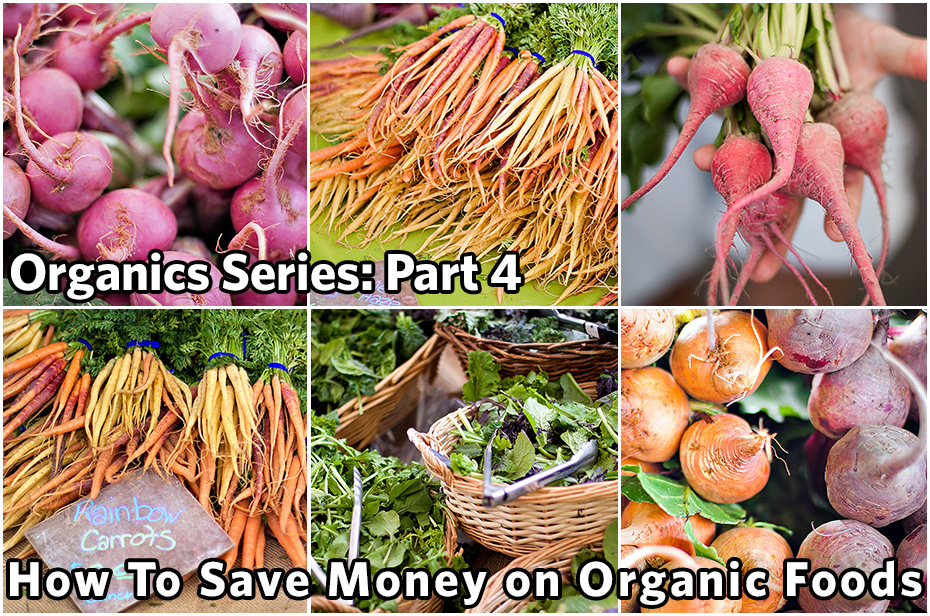

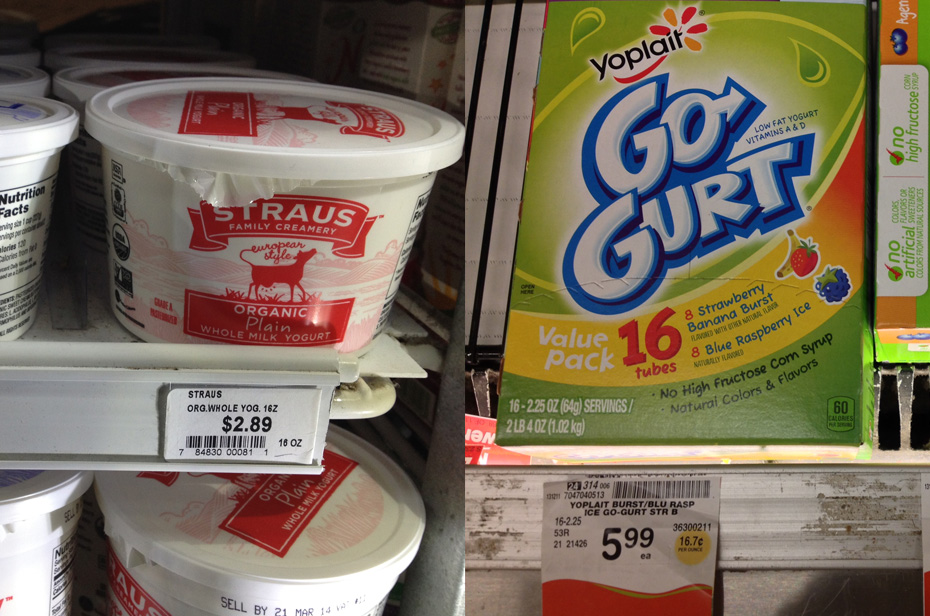





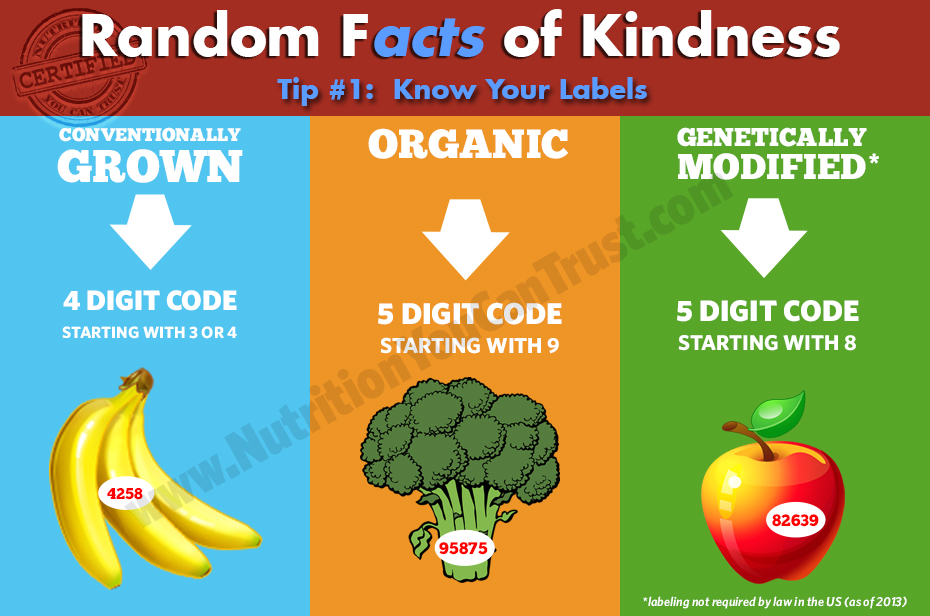









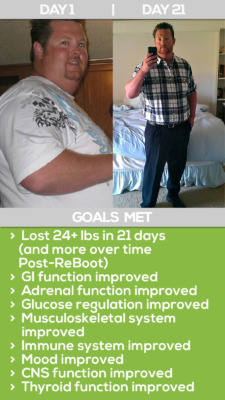








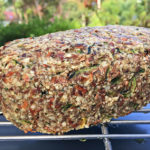



Thank you for all the tips, Jon! I will definitely be using a lot of these.
Excellent Tiffany! You’re very welcome, cheers.
Great tips bro! I always check the price per ounce and save a bunch of money!
I get alot of good info and ideas from the content you put out. thanks for posting!
Thanks Greg, I appreciate that and glad you enjoy the content!
Hi Jon, have you read about the recent changes they’re trying to make with organic standards?
Hi Grace, I think you’re referring to the national list of substances that are allowed in organic? Yes, that is very recent.. Here is a link you can read more about it: http://www.organicconsumers.org/articles/article_29909.cfm
Thank you Jon for this very informative series. I will definitely start eating organic . We are also doing a garden. Loved the cinder blocks and your other tips on growing herbs. Can’t wait to go shopping!
Really glad you have enjoyed Kathy, and very cool on the organic switch and garden!
Those cinder blocks are such a steal for less than $2 each.. I’m actually building a 17 foot long bed right now using blocks.. total cost was about $40 for materials.. can’t tell you how much food will be grown in that, but will be A LOT! You’ll have to send me pics or tag me in social media so I can see your garden when you get it going..excited for you! Cheers
ps: here’s a secret- you can use craigslist free section and search organic “soil” “compost” “pots” and other materials..even the cinder blocks.. I’ve found a lot of great stuff before, usually you just need to pick it up! Save a bunch of money!
You provide so much great information in your posts. I’ve loved this entire series and I’m beyond grateful for your blog and knowledge. Thank you so much!
Thank you for the compliment Brittany, you’re quite welcome. Happy you enjoyed the series!